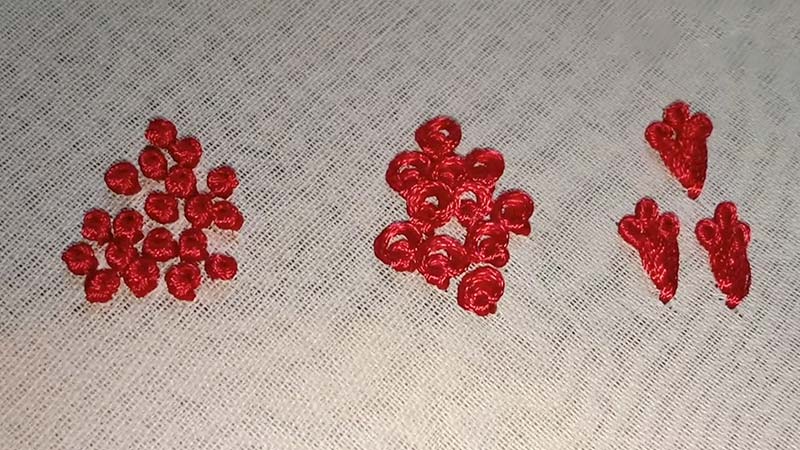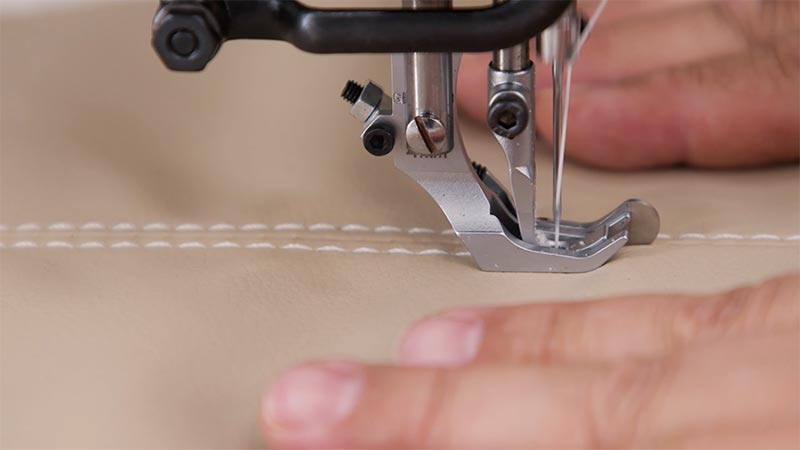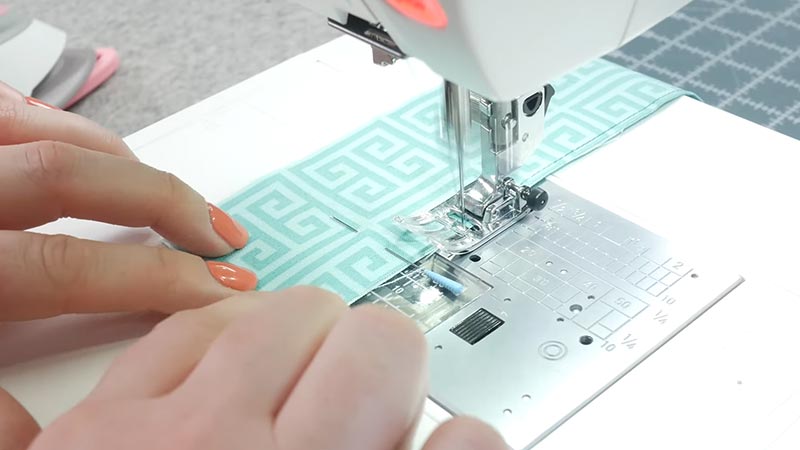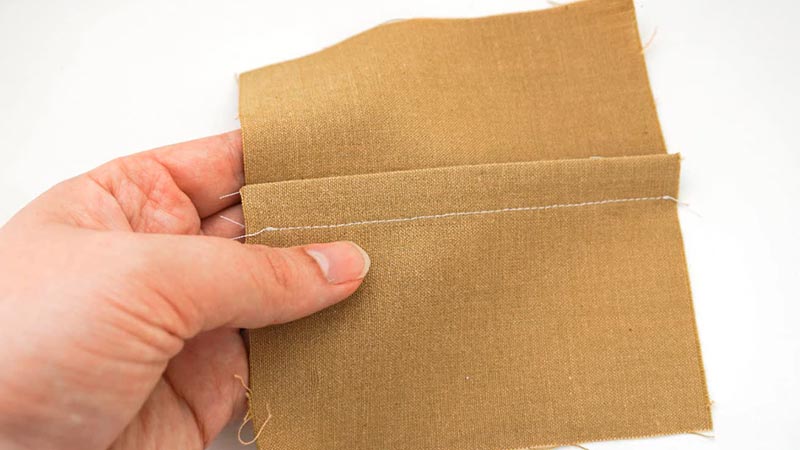The French Stitch, a venerable and enduring bookbinding technique, has long captured the essence of artistry and craftsmanship.
It is a method that transcends the mere act of binding pages together; it weaves a tapestry of tradition, aesthetics, and durability.
Characterized by exposed stitching that adorns the spine, this binding approach not only ensures the structural integrity of the book but also elevates it into a work of art.
Its ability to lie flat when opened, coupled with its versatility in accommodating various design preferences, makes the French Stitch a timeless choice for artisans and book lovers alike.
This technique’s rich historical lineage continues to thrive as a symbol of handcrafted excellence in the digital age.

What Is the French Stitch? -The Definition & Characteristics
What Is the French Stitch in Sewing
The French stitch is a hand-sewing technique that is often used in bookbinding and other crafts to create a secure and decorative binding for books, journals, and other paper-based projects.
This traditional and time-honored method, also known as the “French link stitch” or “Coptic stitch,” has been employed for centuries to produce visually appealing and durable bindings.
It offers several distinct characteristics that make it a popular choice for artisans and bookbinders:
Secured Binding
The French stitch is renowned for its strength and durability. It involves sewing the individual sections of a book or the pages of a project directly to one another, creating a solid and secure binding. This ensures that the pages will remain intact even with frequent use.
Exposed Stitching
One of the most distinctive features of the French stitch is that the stitching is intentionally left exposed on the spine of the book or project.
This characteristic lends an aesthetic appeal to the binding, allowing the intricate patterns of the stitching to become a decorative element of the finished piece.
Versatility
The French stitch is adaptable and can be used for a wide range of bookbinding projects, from simple notebooks and journals to more complex art books and manuscripts.
Its versatility allows artisans to customize their designs and adapt the technique to suit their specific needs.
Lies Flat
The French stitch binding allows the book or project to lie flat when opened, which is particularly advantageous for journals, sketchbooks, and reference materials.
This feature enhances the user experience by making it easier to write or draw near the gutter of the book.
Aesthetic Variability
The exposed stitching in the French stitch offers opportunities for artistic expression. Artisans can use different thread colors and stitch patterns to create visually striking and unique bindings. This makes it a favorite among those who value both form and function in their creations.
Historical Significance
The French stitch has a rich history, dating back centuries in various forms. It is a technique that has been passed down through generations of bookbinders and craft enthusiasts, and it continues to be cherished for its connection to traditional craftsmanship.
What Is the French Stitch Used For?

The French Stitch is a versatile and enduring bookbinding technique used for a wide range of creative and functional purposes.
Its adaptability and aesthetic appeal make it a preferred choice for various applications, including:
Bookbinding
French Stitch is the backbone of traditional bookbinding. It’s utilized to create not only classic, durable hardcover books but also softcover editions.
Its ability to withstand wear and tear, coupled with the convenience of allowing a book to lay flat when open, makes it a staple choice for binding literature, poetry, and historical texts.
Artistic Creations
Beyond conventional books, artists frequently use the French Stitch to craft unique artist’s journals and sketchbooks.
The exposed stitching provides an opportunity for artists to infuse their creations with a distinctive, handcrafted character, making it a canvas for artistic expression.
Photography Albums
Photo albums and scrapbooks hold cherished memories, and the French Stitch adds a touch of sophistication to these visual records.
The binding method ensures that photographs and mementos are securely held in place and presented in an elegant and timeless manner.
Guest Books
At weddings, events, or in boutique businesses like hotels and specialty shops, guest books serve as a means for guests to leave their mark.
French Stitch-bound guest books not only offer durability but also contribute to the overall ambiance with their classic and refined appearance.
Handmade Gifts
Handcrafted books, customized notebooks, and personalized gifts have gained popularity. Whether as a unique gift or a keepsake, the French Stitch enhances the sentimental and artistic value of such creations.
Handmade Calendars and Planners
A well-organized life deserves an equally well-crafted organizer. Planners and calendars using the French Stitch offer a practical yet visually appealing solution for scheduling, taking notes, and setting goals.
Educational Materials
Study guides, workbooks, and textbooks need to endure daily wear and tear. The French Stitch’s robust binding method ensures that educational materials remain intact, no matter how frequently they’re used.
Restoration and Preservation
Bookbinders and archivists often employ the French Stitch for the restoration and preservation of old and valuable texts.
This technique ensures that historical documents and books are not only structurally sound but also historically accurate in their presentation.
Customized Projects
Personalized projects like recipe books, travel journals, and family history books are made more meaningful with the French Stitch.
The flexibility of this technique allows for tailored designs, incorporating unique covers, content, and stitching patterns to reflect the individuality of the project.
What Is the French Stitch on a Dress?

The French stitch, when applied to a dress, is a particular sewing technique used to create a delicate, almost invisible seam.
This method involves hand-sewing a seam with a hidden stitch that keeps the edges of the fabric neatly aligned while minimizing visible stitching lines.
The result is a seam that appears seamless on the outside, contributing to a clean and elegant finish.
French stitching is often employed in delicate fabrics, such as silk or lace, as it prevents fraying and maintains the garment’s overall aesthetic.
This technique demands precision and skill, making it a favored choice for creating high-quality, couture dresses and ensuring that the garment looks as flawless on the inside as it does on the outside.
Benefits of French Stitch

The French stitch, also known as the “French seam,” offers several notable benefits in sewing and garment construction, making it a favored choice for a variety of projects, particularly when dealing with delicate fabrics.
Here are some of the key advantages of using the French stitch:
Clean and Neat Finish
French stitching conceals raw edges within the seam, resulting in a clean and polished appearance on the outside of the garment.
This is especially valuable when working with lightweight and sheer fabrics where visible seams would be unattractive.
Durability
The double-seaming nature of the French stitch enhances the strength and longevity of the seam. It reduces the risk of fraying and ensures that the fabric remains securely joined, even after numerous wear and wash cycles.
Comfort
Since the French stitch encapsulates the raw edges of the fabric, there are no rough or scratchy seams that can irritate the skin, making it particularly comfortable for undergarments or garments worn close to the body.
Professional Aesthetics
The French stitch imparts a professional and couture-like quality to garments. It’s often used in high-end fashion to create a refined and elegant look, suitable for formal wear and special occasions.
Versatility
While it is commonly associated with fine and delicate fabrics, the French stitch can also be applied to a variety of materials, including cotton, linen, and lightweight wool. This versatility allows it to be used in a wide range of sewing projects.
Prevention of Fraying
The French stitch effectively prevents fraying, which is essential when working with fabrics prone to unraveling. It provides a solution for ensuring the longevity of the garment.
Invisible Seams
The French stitch creates nearly invisible seams on the outside of the garment, eliminating the need for additional seam finishing techniques like serging or zigzag stitching. This results in a sleek and seamless look.
Increased Value
The use of the French stitch can significantly elevate the perceived value of a garment, whether it’s a custom-made piece or a commercial product. The attention to detail and the absence of visible seams are indicative of quality craftsmanship.
Customization
The French stitch allows for customization, enabling sewers to achieve a high level of precision and control over the seam. This is particularly beneficial for those who enjoy creating tailored and unique garments.
FAQS
Is the French Stitch suitable for heavy fabrics?
The French stitch is primarily used for lightweight and delicate fabrics. For heavy fabrics, other seam finishing methods like overlocking or flat-fell seams are generally more appropriate.
Can I use a sewing machine for the French Stitch?
While the French stitch is traditionally a hand-sewing technique, there are machine methods that can mimic the look of a French seam. However, the hand-sewn approach is preferred for precision and delicate fabrics.
Does the French Stitch work for stretch fabrics?
French seams are not recommended for stretchy fabrics, as they restrict the fabric’s natural elasticity. Stretch fabrics are better suited for techniques like serging or zigzag stitching to maintain stretchability.
Are there any special considerations when using the French Stitch on lace fabric?
When working with lace, it’s important to use a fine, delicate thread and take extra care to match the lace pattern along the seam.
Is the French Stitch the same as a flat-fell seam?
No, the French stitch and flat-fell seam are different techniques. A French seam encases the raw edge within the seam, creating a hidden seam on the right side.
In contrast, a flat-fell seam involves folding one seam allowance over the other and topstitching it down, creating a visible topstitch on the right side of the fabric.
To Recap
The French Stitch is a versatile and cherished sewing technique that transcends mere seam construction.
Its ability to create clean, hidden seams in delicate fabrics, preventing fraying and enhancing garment longevity, is invaluable.
The method’s refined appearance and comfortable finish make it a favorite choice for high-end fashion, formal wear, and intimate apparel.
The French Stitch also carries a sense of craftsmanship and couture quality, elevating the value of handmade garments.
This age-old technique is a testament to the artistry and precision that sewing can achieve, preserving the beauty of fabrics while demonstrating the enduring relevance of traditional craftsmanship in the world of fashion and textiles.
Leave a Reply